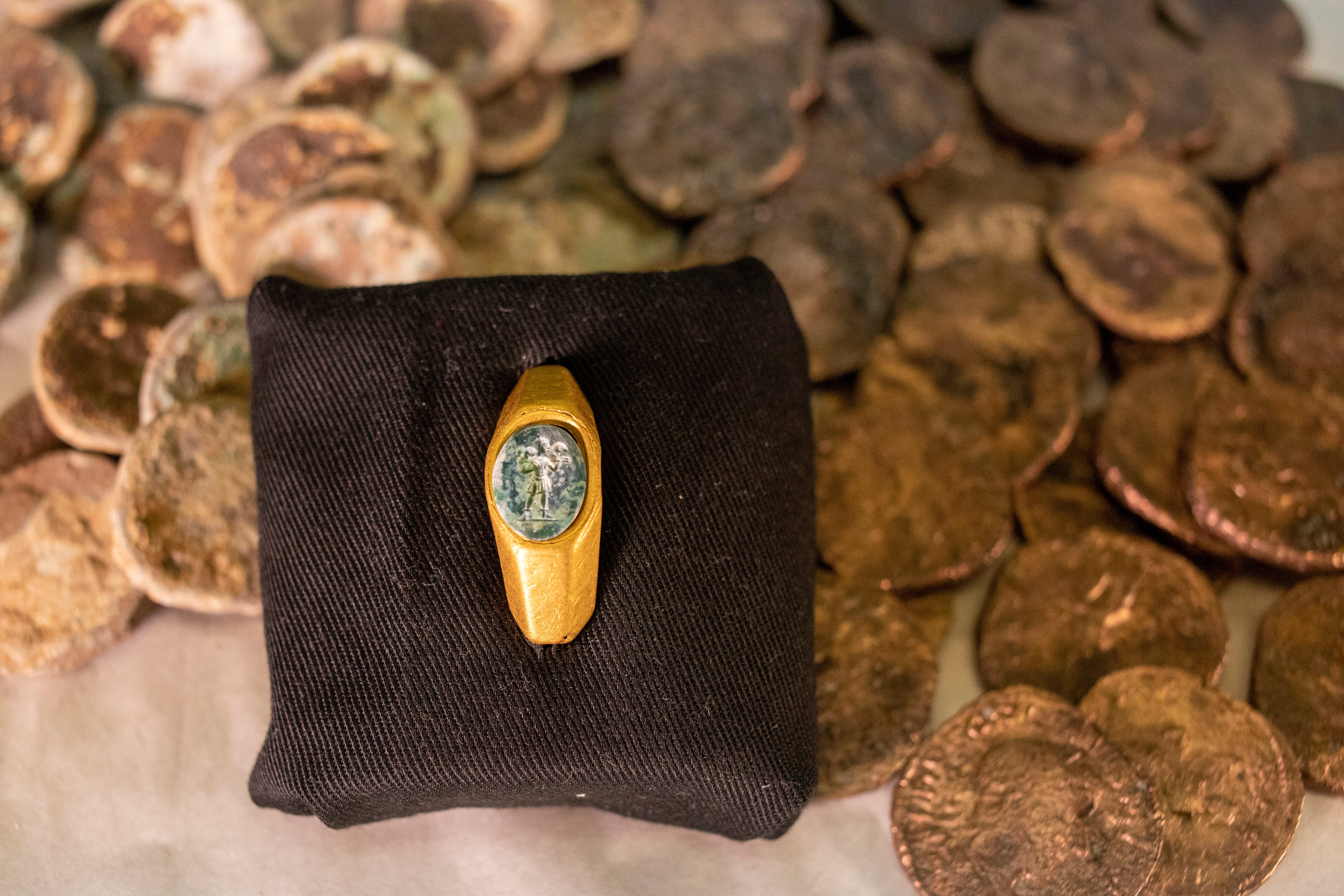Israeli archeologists find octagonal ‘Good Shepherd’ gold ring in Roman-era ship wreck
Two shipwrecks were found near the ancient city of Caesarea during an underwater survey

Two shipwrecks discovered off the Mediterranean coast have revealed a treasure trove of a rare Roman-era golden ring with an early Christian symbol for Jesus and hundreds of Roman and medieval silver coins.
Archaeologists of the Israel Antiquities Authority (IAA) announced the discovery on Wednesday.
They found a Roman-era golden ring with an early Christian symbol for Jesus inscribed in its gemstone in one of the shipwrecks.
The green gemstone on the thick octagonal ring bears the figure of the “Good Shepherd” and shows a young shepherd boy in a tunic with a ram or sheep across his shoulders.
The image is supposed to represent Jesus as a caring shepherd, something archaeologists said was rare to have been inscribed on a ring as the image existed in early Christian symbolism.
“This was a period when Christianity was just in its beginning, but definitely growing and developing, especially in mixed cities like Caesarea,” Helena Sokolov, a curator at the IAA’s coin department told news agency AFP.
She added that the ring was small, implying that it may have belonged to a woman.
The shipwrecks were found near the ancient city of Caesarea during an underwater survey conducted by the IAA’s Marine Archaeology Unit in the past two months.
Caesarea was the local capital of the Roman empire in the third century and its port was a key hub for Rome’s activity, said Ms Sokolov.
Archaeologists said the remains from the shipwrecks date to the Roman and Mamluk periods, around 1,700 and 600 years ago.
The Roman ships are believed to have originally come from Italy based on the style of some of the artifacts, IAA’s Marine Archaeology Unit head Jacob Sharvit told the Associated Press.
He said it remained unclear whether any remnants of the wooden ships remained intact beneath the sands.
The findings also include hundreds of Roman silver and bronze coins dating to the mid-third century, as well as more than 500 silver coins from the Middle Ages.
Other remains found at the site included figurines, bells, ceramics, and metal artifacts that once belonged to the ships, such as nails and a shattered iron anchor.
Subscribe to Independent Premium to bookmark this article
Want to bookmark your favourite articles and stories to read or reference later? Start your Independent Premium subscription today.

Join our commenting forum
Join thought-provoking conversations, follow other Independent readers and see their replies